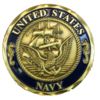Number of pixels needed for execellent print
Feb 10, 2015 17:43:18 #
I am now ready, finally, to start getting some of my photos printed and framed. I know I have read this somewhere and often.
What is the rule of thumb for a photo be printed at:
11 x 14
8 x 10
In other words how large should the photo be to get a good looking print visualizing it at a close distance, like hanging on a wall.
Or just lead me to a reference source would be appreciated.
Thanks in advance
What is the rule of thumb for a photo be printed at:
11 x 14
8 x 10
In other words how large should the photo be to get a good looking print visualizing it at a close distance, like hanging on a wall.
Or just lead me to a reference source would be appreciated.
Thanks in advance
Feb 10, 2015 17:52:43 #
As a general rule of thumb, I use 300 pixels per inch when sizing for printing. So, an 8x10 should be at least 3000 pixels along the long edge. Remember, always start from the largest size your camera can give you and then size down. Sizing up creates issues that can cause less than desirable results.
Feb 10, 2015 17:55:33 #
Here is a technical article (with formulas) for determining print size -
http://www.robsphotography.co.nz/Determining-Print-Size-Of-Digital-Images.html
Hope this helps
http://www.robsphotography.co.nz/Determining-Print-Size-Of-Digital-Images.html
Hope this helps
Feb 10, 2015 18:06:42 #
Bike guy wrote:
I am now ready, finally, to start getting some of my photos printed and framed. I know I have read this somewhere and often.
What is the rule of thumb for a photo be printed at:
11 x 14
8 x 10
In other words how large should the photo be to get a good looking print visualizing it at a close distance, like hanging on a wall.
Or just lead me to a reference source would be appreciated.
Thanks in advance
What is the rule of thumb for a photo be printed at:
11 x 14
8 x 10
In other words how large should the photo be to get a good looking print visualizing it at a close distance, like hanging on a wall.
Or just lead me to a reference source would be appreciated.
Thanks in advance
The Gold Standard is 300 pixels per inch, however...
It depends also on viewing distance. Hence if your image is posted on the wall in a stairwell, you'd better make it 300 PPI no matter how large it is because the viewer will always be close. And by the same token if the image is mounted 20 feet high on an exterior wall it needs to be large but it doesn't need a lot of pixels.
But generally speaking in places where photographs are mounted the viewers will have "normal" viewing distances (whatever that is) but if they notice something they like they'll approach for a better look. Hence for best "results", use lots of pixels even if they aren't needed for casual viewing.
Feb 10, 2015 18:57:18 #
Feb 10, 2015 19:25:02 #
300 pixels sounds good. If an image is quite a bit larger, is there any reason to reduce the size before sending it to an online printer? Other than saving upload time. I was wandering if the print quality would change if their printers had to reduce the resolution to print. Hope this makes sense to someone.
Feb 10, 2015 19:49:58 #
If you want to go to a dependable reference, I think a professional printing service such as Bay Photo might be a good start. Scroll to 'Print Size Minimum Image Resolution' on this web page:
http://www.bayphoto.com/support/faqs_file-preparation.htm
http://www.bayphoto.com/support/faqs_file-preparation.htm
Feb 10, 2015 20:24:37 #
bibsthecat wrote:
300 pixels sounds good. If an image is quite a bit larger, is there any reason to reduce the size before sending it to an online printer? Other than saving upload time. I was wandering if the print quality would change if their printers had to reduce the resolution to print. Hope this makes sense to someone.
That depends on how critical you are, and how able too.
We talk about 300 pixels per inch, but that is actually 300 original pixels per inch. The printer may print something else, and the image will be resampled to get the correct dimensions. Any resampling that is generic will almost by definition degrade an image, and that is true if it to upsize or to downsize. Different algorithms are better depending on the image, up or down, and how much. And then the image should be sharpened to suit, which will be different also depending on all of those parameters.
The average person probably won't really notice, and will be happy to send whatever they have to a commercial printer (who will make generic choices) and they'll find no fault with the results.
If the work is critical, and each different method is tried and the best selected, yes the differences are visible.
Ideally you find out what the actual pixel print rate is for the printer that will be used, resample your image to the correct size using your choice of resampling algorithms and then resharpen using your choice of methods and amounts. Then send it to the printer with instructions to not make any adjustsments.
Feb 10, 2015 21:44:22 #
Feb 11, 2015 06:31:35 #
Bike guy wrote:
I am now ready, finally, to start getting some of my photos printed and framed. I know I have read this somewhere and often. What is the rule of thumb for a photo be printed at:
11 x 14
8 x 10
In other words how large should the photo be to get a good looking print visualizing it at a close distance, like hanging on a wall.
Or just lead me to a reference source would be appreciated.
Thanks in advance
11 x 14
8 x 10
In other words how large should the photo be to get a good looking print visualizing it at a close distance, like hanging on a wall.
Or just lead me to a reference source would be appreciated.
Thanks in advance
My understanding is that the eye cannot see the difference between two dots closer then .2mm. that would work out to 127 dots per inch and for a 11 x 14 photo, less then 1800 dots on the long side. Am I correct in this assumption?
Feb 11, 2015 06:58:54 #
Pixels are not the only factor to consider. I have an old Canon 5mp S50 with an excellent lens that I can use for very good 8x10 prints, but have seen cheap 8, 10 and 12 mp cameras that struggle to make decent 4x6 prints. Any camera with 12mp has enough for good, large prints. After 12mp other factors come into play.
Feb 11, 2015 08:27:14 #
ralphc4176
Loc: Conyers, GA
I normally use 300 dpi for printing 4 x 6 prints. For larger prints, I normally use a higher resolution, depending on the printer's capability and how much detail I want to be visible. Some printers won't print more than 600 dpi, while others may go to 1200 dpi or more. The greater the dpi, the slower the printing process on inkjet.
Feb 11, 2015 08:49:21 #
BooIsMyCat
Loc: Somewhere
Shellback wrote:
Here is a technical article (with formulas) for determining print size -
http://www.robsphotography.co.nz/Determining-Print-Size-Of-Digital-Images.html
Hope this helps
http://www.robsphotography.co.nz/Determining-Print-Size-Of-Digital-Images.html
Hope this helps
Service Unavailable
:evil:
Feb 11, 2015 09:32:23 #
Bike guy wrote:
I am now ready, finally, to start getting some of my photos printed and framed. I know I have read this somewhere and often.
What is the rule of thumb for a photo be printed at:
11 x 14
8 x 10
In other words how large should the photo be to get a good looking print visualizing it at a close distance, like hanging on a wall.
Or just lead me to a reference source would be appreciated.
Thanks in advance
What is the rule of thumb for a photo be printed at:
11 x 14
8 x 10
In other words how large should the photo be to get a good looking print visualizing it at a close distance, like hanging on a wall.
Or just lead me to a reference source would be appreciated.
Thanks in advance
I use 240 ppi as a minimum pixels per inch for a good print, so 240 x 8 =1920 pixels
and 240 x 10 = 2400 pixels
This assumes that you are only using native image pixels and not upsampling the image.
Feb 11, 2015 10:29:04 #
Shellback wrote:
Here is a technical article (with formulas) for determining print size -
http://www.robsphotography.co.nz/Determining-Print-Size-Of-Digital-Images.html
Hope this helps
http://www.robsphotography.co.nz/Determining-Print-Size-Of-Digital-Images.html
Hope this helps
This is apparently a bad link. I got a "Service not available" message when I clicked on it. By any chance do you have another link? Thanks...
If you want to reply, then register here. Registration is free and your account is created instantly, so you can post right away.









